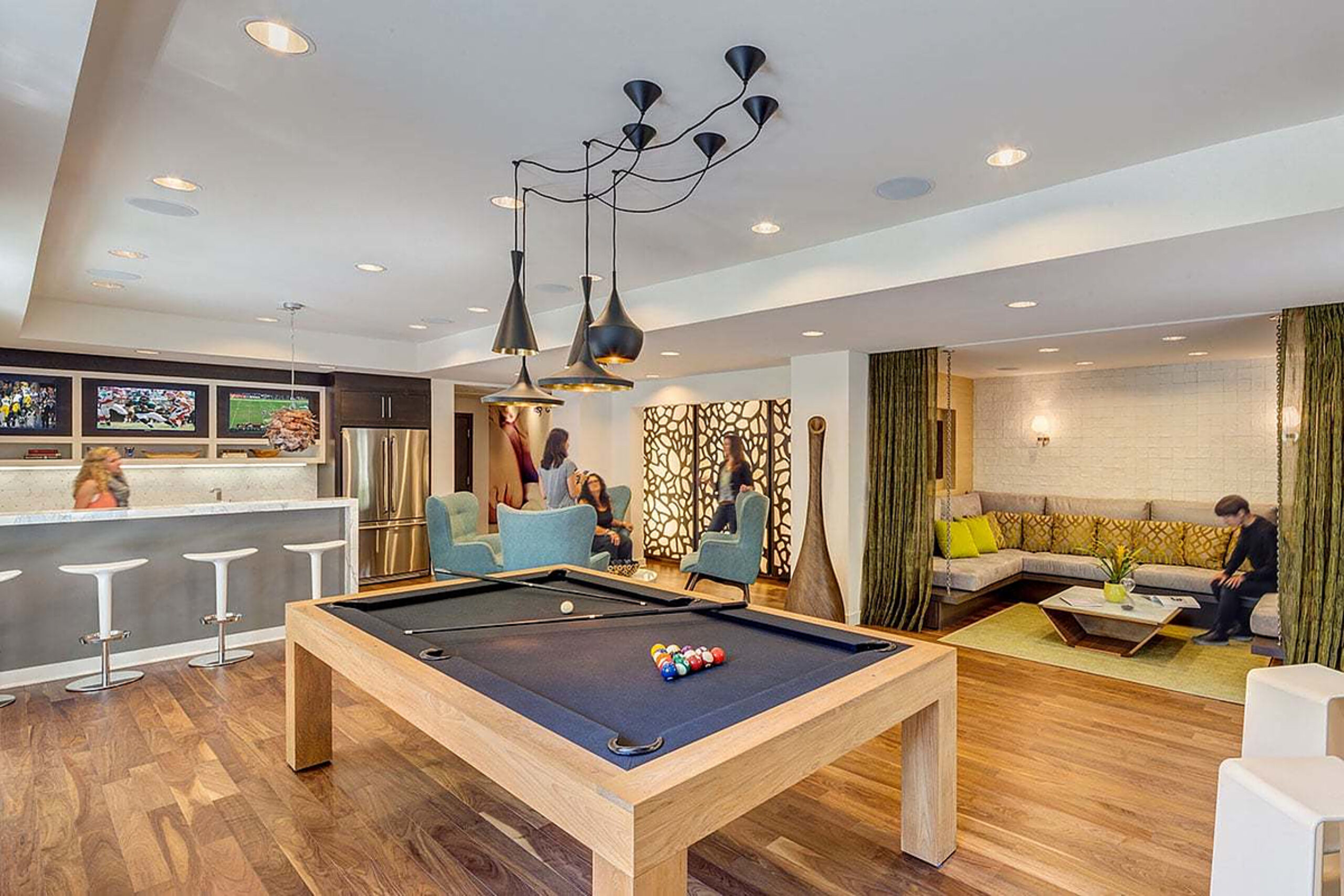More Communal Space, Please: A Dramatic Shift in Interior Architecture for Multi-Family Development

For a few years now, interior architects have felt the impact of the approximately 70 million millennials (or Gen Yers) who are entering the workforce on the design of corporate office space. Now, that impact is being felt in multi-family development, as millennials look for homes that provide a more engaging environment and high-end amenities.
Interestingly, in return for more communal areas and cutting-edge amenities, millennials are willing to give up a portion of their personal space and live with less square footage in their actual residence.
The net result is that multi-family developers are now strategically directing their interior architects to design luxury apartment communities that incorporate more shared space and common areas that are reminiscent of a boutique hotel.
A recently completed luxury apartment project in North Hollywood, Calif., called The Hesby, serves as an ideal example of this shift in utilizing multi-family space. There, residents are happy to trade extensive personal space to live in a community that offers top-line amenities such as a lounge that features a James Perse pool table and 3D television, a “writers’ café” with a Nespresso bar, an onsite sound studio, state-of the-art Technogym fitness and weight equipment, and a yoga and dance studio.
And those are just the indoors amenities.
Outdoors, residents can avail themselves of an outdoor “living room” with fireplace and theatre, dining areas with BBQ grills, dog run, and zero-edge pool and soaking spa.
Complimentary WiFi with docking stations and USB outlets, as well as onsite dry cleaning drop‑off and pick-up service also come standard in the common areas.
The ICIS Apartment Homes in Glendale, Calif., offer “couture amenities” such as a zero-edge pool with underwater speakers and soaking spa; poolside cabanas; relaxing hammocks; outdoor garden with fireplace; three stylized rooftop decks for pets, daybed loungers to sunbathe, and entertainers; and an outdoor amphitheater with a 106-inch theatre and gaming multimedia system.
These types of amenities have become the must-have conveniences that sophisticated multi‑family developers need to install to attract millennials and upscale renters.
What Is Driving This Trend?
Several factors are contributing to this drive toward less personal, more communal space:
- Millennial Characteristics: Generally, millennials are characterized as being tech savvy, wanting a work-life balance that is more relaxed in nature, and desiring instant access to things. Onsite amenities where virtually all of their personal needs are addressed fit in line with the expectations of today’s Gen Yers.Millennials also belong a hypersocial generation that wants to connect with everyone, even strangers, through things like social media and online dating. This characteristic extends to the place they live, where they want to meet and get to know new people to extend their personal network. More shared amenities enable this connectedness.
- Millennial’s Lifestyle: Generally, millennials are busy and transitory. They move from place to place. This lifestyle applies to day-to-day living where millennials do not spend much time at home; their residence is more of a touch-down space where they sleep.In the longer term, millennials tend to move jobs and geographies with much more ease than the Baby Boomer generation, making apartment dwelling an ideal choice.
- Urban Living: According to 2012 U.S. Census report, the number of Americans who lived in urban areas rose from 79 percent in 2000 to 80.7 percent in 2010. The population of urban areas grew by 12.1 percent from 2000 to 2010. More people are moving into urban areas, driving up demand for housing, public transportation, social services (e.g., schools, healthcare, etc.), and more.With population density increasing in urban areas, millennials are used to working in and living with less personal space. In addition, many of them telecommute and are used to touchdown stations at work.
- “Walk-to Convenience”: Part of living in an urban setting is having the ability to walk to restaurants, bars, cafés, theatres and galleries, school, and work. Convenience also pertains to nearby freeway access and proximity to transportation hubs.
- Live Near Your Work Programs: Several major metropolitan cities including New York and Washington, D.C. have instituted “Live Near Your Work” (LNYW) programs to bring back workers to the city that include tax credits and parking subsidies. More workers mean more spending for the city’s economy and generate more tax income.
With the evolving composition of today’s workforce including millennials coupled with their migration to more urban environments, multi-family developers need to engage seasoned, market-aware interior architecture consultants that can ensure that their properties offer the best floor plans and amenities to attract today’s sophisticated renters.